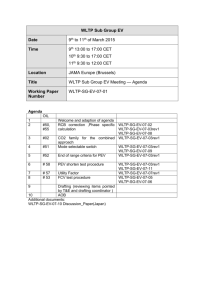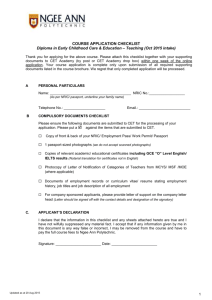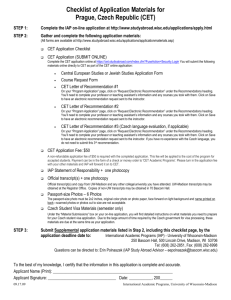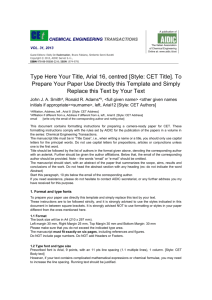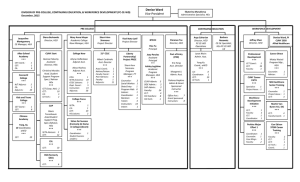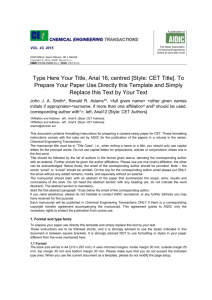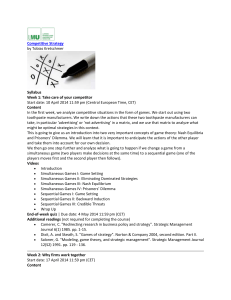CET Tarriff Structure
advertisement
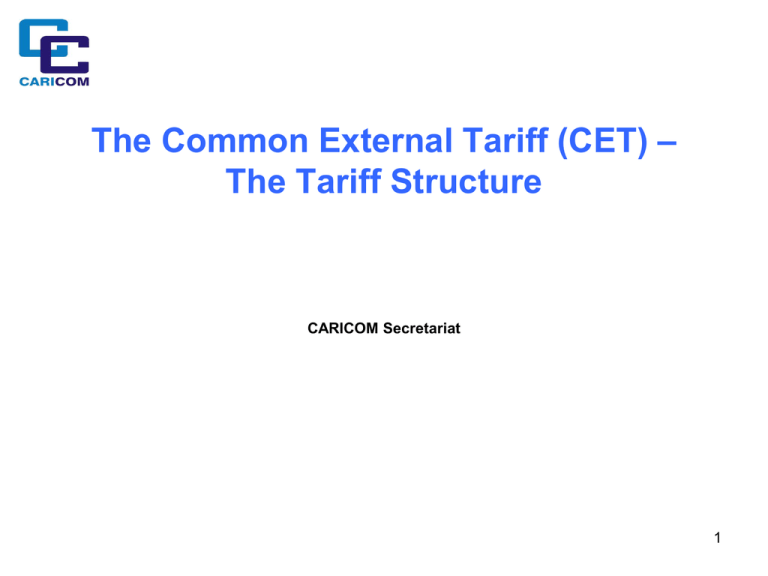
The Common External Tariff (CET) – The Tariff Structure CARICOM Secretariat 1 Establishment of Common External Tariff Member States shall establish and maintain a common external tariff in respect of all goods which do not qualify for Community treatment in accordance with plans and schedules set out in relevant determinations of COTED (Art 82). 2 Classification Structure The common external tariff is based on the World Customs Organization’s Harmonized Coding and Description System structure at the eight digit level. The latest version of the CET is based on HS 2007. 3 Categorizing of products In the development of the rate structure for the CET, products were categorized as: (i) inputs into the production of other products or; (ii) final goods 4 Scope of Inputs The term “inputs” covers primary and intermediate products and capital goods. 5 Competing and non-competing For each of those two broad product categories, a further distinction was made between those goods that are deemed to be competing with like regional production and those which are regarded as non-competing. 6 Rationale for Competing status Where regional production or immediate regional production potential from existing capacity amount to in excess of 75% of regional demand for a particular product, then imports of the like product from outside the single market would be deemed to be competing. 7 Rationale for Non - Competing status If the level of regional production did not satisfy the 75% minimum, then imports of like products would be deemed to be noncompeting. 8 Products Requiring Special Treatment Within both categories of inputs and final goods, a number of products were identified as requiring special treatment in the assigning of tariff rates. These included agricultural as well as agroindustrial goods, good which have already achieved a certain level of competitiveness in third country markets and certain other goods deemed to be of a sensitive nature. 9 The CATEGORIES that were given special CET rates are: (a) Selected Exports – where a significant proportion of the output of the producing enterprises are destined for third country markets e.g. urea and plywood. (b) Agriculture – these items are primary agricultural products and includes live animals, vegetables fruits and nuts. 10 The CATEGORIES that were given special CET rates (con’t) (c) Agricultural Inputs – some examples of goods falling in this category are fertilizer and soil preparation machinery. (d) Safety – some examples of goods falling in this category are fire-fighting apparatus distress signals and life jackets. 11 The CATEGORIES that were given special CET rates (con’t) (e) Cost of Living Sensitive – items deemed sensitive on the grounds of their cost-of-living importance include certain meat and fish products, butter, cheese, medicaments and educational materials. (f) Socio-economic/Culture – this category comprises a varied group of items which are inputs into the provision of the important social services such as health and education, as well as cultural pursuits such as music. 12 The CATEGORIES that were given special CET rates (con’t) (g) Revenue – items of this category which have been used by a number of Member States as important sources of import duties are principally alcoholic beverages and cigarettes. 13 Thank you Any Questions? 14
